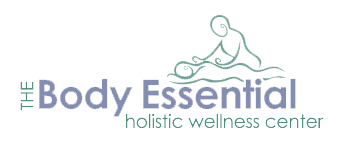Heart disease continues to be one of the most common areas of concern in 2008. For years, it has been the # 1 cause of death in the United States. So let’s hear some good news. In January of 2008, the Center for Disease Control (CDC) who monitors death rates found that since 1999, coronary heart disease and stroke death rates are down by 25.8 percent and 24.4 percent, respectively.
Such good news means it is time to look a little more closely to see where success happened and keep it going. Most of us are familiar with the risk factors that set up the opportunity for a life changing event to occur. These risk factors are still too high according the American Heart Association and some are actually going up.
Risk factor list for heart disease: 1. Diabetes, Metabolic Syndrome 2. High Blood Cholesterol and Other Lipids 3. High Blood Pressure 4. Overweight and Obesity 5. Physical Inactivity 6. Tobacco
The reduction in the death rates for heart disease and stroke equals approximately 160,000 lives saved in 2005 (the most recent year for which data is available) compared to 1999 statistics. Improved medications that address the prevention aspect of heart health and evidence-based practices have contributed to this reduction. While some of these advances are better discussed with the health care team, some are simple and equally as crucial to saving lives. Heeding the warning signs and getting to the hospital quickly make a big difference. If artery clogging cholesterol is a problem, getting coronary arteries checked can be timely management of the disease.
While it is everybody’s responsibility to make the lifestyle changes toward better health, there have been strides in our communities that have also made a difference. Clean indoor air legislation and government funded smoking cessation assistance has paid off.
Physical inactivity has been studied and studied and the rates for continued inactivity have changed very little even though the connection to serious health risk is reported in newspapers, magazine articles, TV shows and the internet. We are already seeing younger people with increased weight and the related concerns of developing disease from a lack of movement. Progress is happening but all Americans have to keep up the awareness and attention to getting up and walking, running, dancing or whatever type of exercise gets those calories burned. Be a role model or choose someone to be your best example.
If it is time to look at how to lower your risk and start being that example of change, then now is the time. Start by taking back your food preparation from strangers and make meals that are right for you.
Plan out a few meals and take a look at how and what kind of staples to keep in the house. There are many healthy choices that can be both convenient time savers and save money. If understanding the difference between healthy and unhealthy eating is confusing, start with the basics. The quality of the food is related to the number of preservatives, the kinds of fats and how much variety is eaten. Quantity of food is the bottom line for your bottom. Eating more calories than you burn up in a day is all about how much and how often you serve yourself. The dishes in the cupboard can be part of the understanding and the solution! Serve up what is a usual serving, and then measure it before you eat. Knowing the number of servings in a favorite dish or plate lets you take the lead with how to adjust your eating.
Just knowing the amount served and choosing between cutting back that portion and modifying it is a fix you control. Eating more than one serving of some things is usually fine. Knowing that a food with no fat does not mean it has no calories is to be ahead of the game. Bananas are a good high potassium food and a serving is about 100 calories. There are about 80 calories for the smaller ones and maybe 110 calories for the larger bananas. So go with the average since bananas come in different sizes. Try to buy smaller ones to keep the calories under control without having to count every calorie.
Your heart is not the only thing to benefit from healthy eating. Start to think about the big picture and what this healthy lifestyle really means. Consider the connections that can be made with family or friends when you prepare and eat together. What better excuse to strike up conversation with a teenager than working around a cutting board? Make the choices for all the other reasons besides improved health- better sleep, better fitting clothes, better attitude and more get up and go.
Your heart is in your hands.
 I think this advice is good for every child, but especially so for children with autism or any special need. It is a tough job being a parent under the best of conditions and I realize that parenting a special needs child is very often even more difficult. While the rewards of parenting are great, the realities of parenting show struggles (sometimes daily) for every parent. The goodnight kiss is a way in which we as parents can reconnect with our children no matter what the day or their behavior/attitude brought to us. It is that physical-emotional bond that helps us reorient ourselves to seeing our child not as a bad boy or girl- but as a normal child who occasionally will act up, be vulnerable, show developmental resistance or just be frustrated with no other way to communicate that to us. It is a reminder that this beautiful boy or girl is special in every sense of the word. My prescription is to increase hugs and kisses to all children (prn). They will feel better and we will feel great.
I think this advice is good for every child, but especially so for children with autism or any special need. It is a tough job being a parent under the best of conditions and I realize that parenting a special needs child is very often even more difficult. While the rewards of parenting are great, the realities of parenting show struggles (sometimes daily) for every parent. The goodnight kiss is a way in which we as parents can reconnect with our children no matter what the day or their behavior/attitude brought to us. It is that physical-emotional bond that helps us reorient ourselves to seeing our child not as a bad boy or girl- but as a normal child who occasionally will act up, be vulnerable, show developmental resistance or just be frustrated with no other way to communicate that to us. It is a reminder that this beautiful boy or girl is special in every sense of the word. My prescription is to increase hugs and kisses to all children (prn). They will feel better and we will feel great.
 Cough…cough…choke…choke…sniff…sniff…what is that I am smelling?! Have you encountered a client or practitioner who made you wonder the same thing? It is difficult to work with someone who offers a less than pleasing aroma. As professionals, it is important for us to remember that scents can and do disturb some and the worst of them hinder the experience for everyone. When I taught at the massage school, we had a class entitled Health and Hygiene. I was always amazed by the number of students that would rush out for a smoke immediately following the discussion of that topic! It is up to us to be mindful of what we eat (smells come through our skin), wear or do that will “smelly up” the experience for our clients. Honestly, I don’t care how wonderful a therapist is, if the offer an offensive odor, I want out of there.
Cough…cough…choke…choke…sniff…sniff…what is that I am smelling?! Have you encountered a client or practitioner who made you wonder the same thing? It is difficult to work with someone who offers a less than pleasing aroma. As professionals, it is important for us to remember that scents can and do disturb some and the worst of them hinder the experience for everyone. When I taught at the massage school, we had a class entitled Health and Hygiene. I was always amazed by the number of students that would rush out for a smoke immediately following the discussion of that topic! It is up to us to be mindful of what we eat (smells come through our skin), wear or do that will “smelly up” the experience for our clients. Honestly, I don’t care how wonderful a therapist is, if the offer an offensive odor, I want out of there.